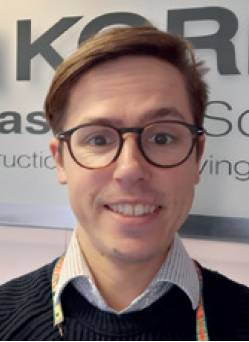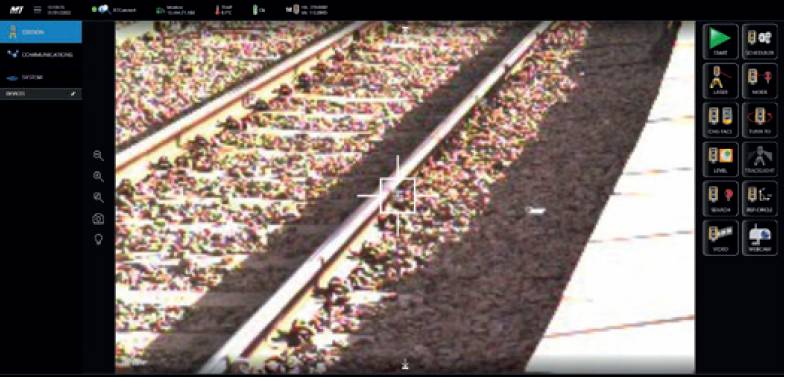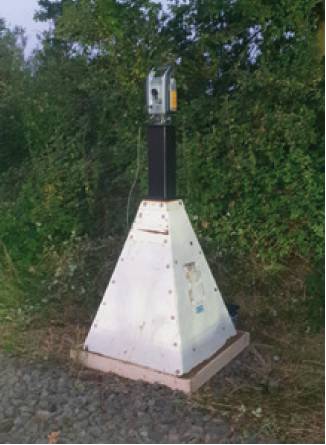COVID induced advances in monitoring techniques
Liam Hartley, Monitoring Applications Engineer, KOREC

IT has been two years since COVID first became a worldwide health concern and there is no doubt that the pandemic has profoundly altered our daily lives both personally and professionally. Whilst it has transformed the way we live in many ways, it has also created a very different business environment for almost every industry with a recent McKinsey and Company report stating that, broadly speaking, companies have adapted to the new demands on them much more quickly than they had thought possible before the crisis.
This is particularly true within our own industry where lockdowns and social distancing have forced us to conceive new strategies and practices to keep projects on track during these periods.
A great example of this ability to adapt has been the monitoring sector. Since the beginning of 2020, KOREC has been dealing with an upsurge in enquiries from surveyors involved in monitoring projects who felt that they would be unable to do their job properly, or profitably, if they couldn’t get a team into the field. Simply, they were looking for solutions to move away from the traditional survey methods that require regular site visits for either manual monitoring, installation or maintenance of systems and instead replace them with alternative solutions to reduce boots on the ground whilst still remaining effective and profitable.
Evident trends
With the past 24 months behind us, the four most noticeable changes that have allowed surveyors to advance their monitoring techniques are:
- Use of automated solutions on short term projects leading to a reduction in site visits to carry out manual monitoring, ensuring work could continue despite lockdowns.
- Use of alternative technologies to replace the traditional total station and prism. KOREC has noticed an increased willingness to use methods such as a 3D laser scanner (reducing the need for a team on site and effectively bringing the site to the laptop), increased use of geotechnical sensors (low on-site maintenance requirements so less need for staff on site) and increased use of 4G gateways (enabling communication with the wireless geotechnical sensors and data loggers to connect the project).
- Shift in focus from buying to hiring solutions and therefore reducing outlay for improved cash flow and increased profitability.
- Rapid advances in remote site management hardware and software, an area where we have seen, by far, the most advancement from remote installations to customised software and automated reporting.
Staying safe and staying profitable
From the outset of 2020, the need to have the minimum number of people on site has dictated how companies have approached their monitoring operations.
From the outset of 2020, the need to have the minimum number of people on site has dictated how companies have approached their monitoring operations. This concern has been a driving force behind the growth in automated monitoring. In particular, the remote installation and management of systems has been picked up on by many project managers so that work could continue despite lockdowns.
The ability to install a system remotely means that none of KOREC’s monitoring team were required on site during the pandemic to activate systems and additionally this reduced travel and personnel costs. The operation could be carried out by KOREC over the phone and by using a laptop and laptop camera connected to the internet.
Ease of setup was further facilitated by sourcing a number of custom mount designs that did not require specialist expertise to place and fit. These mounts and cages were quick to manufacture and easy to transport which enabled rapid, cost-effective installation on site. The monitoring team also aimed to provide a power source for two weeks or longer to reduce return visits to the site for maintenance.
This was achieved through the use of battery banks and solar power systems. The remote approach to many monitoring operations has seen a significant increase in the use of available software by exploring its functionality further, as well as requests for new customised reporting routines.
This better understanding of remote instrument control and management has allowed many customers to exploit the functionality of their setup and reporting facilities to include scheduling, remote troubleshooting, data flow management, increased use of cloud services, system watchdog software, FTP push to third party software and specialised reporting.
Where are we going?
It seems we are finally emerging from a turbulent two years which makes it a good time to reflect on how these trends will continue to affect the future of monitoring. The KOREC team believes that we will continue to see greater levels of automation, a greater uptake of cloud-based services, a subtle shift from total station solutions to geotechnical solutions and even safer working environments for staff. These are all encouraging pointers towards a safer and increasingly efficient and cost-effective future for monitoring.
Liam Hartley, Monitoring Applications Engineer, KOREC Group
Using automated monitoring, remote setup and customised software routine to ensure uninterrupted monitoring at Aylesbury Vale

SEP Rail was determined to maintain business as usual as the company sought to counteract COVID related absences through careful planning and innovative solutions. A typical example of this was a six-week rail monitoring project carried out mid-summer on a 146m stretch of track during embankment stabilisation work at Aylesbury Vale.
Already suffering from COVID absences in both his field and office operations, managing director James Morrow sought to establish a monitoring setup that would reduce the number of personnel required on site and in the office for data processing – SEP Rail teams are usually a bubble made up of a senior staff member and an assistant travelling in a single vehicle.

Working with KOREC’s Julian Gray, two Trimble ATS total stations with VISION technology were selected for the job which would be used in conjunction with 166 prisms. The built-in camera on the total station would enable the SEP Rail team to check the project remotely. The system would be battery powered with the weekly battery placement being the only planned site visits for the project.
Before installation, a detailed to-do list was drawn up. The system was installed over two Saturday nights with the setup finished remotely by laptop on the Monday morning.
The processing and reporting of the data to Network Rail, presented in a specifically requested format, could prove especially challenging because the data processing team was operating at just 40% due to COVID related absences. Julian Gray therefore created a customised software routine that would ensure that the processing and reporting would be fully automated and require nothing more than a check by James Morrow before it went to the client. The software routine is used in conjunction with Trimble’s T4D monitoring software and has been carefully designed to calculate automatically rail cant and twist as per the Network Rail standard. This was vital to the smooth running of the project.
SEP Rail was able to deliver an extremely smooth-running monitoring project that produced information exactly as per Network Rail standards, all managed with a minimal need for site visits and office-based processing staff.
Using geotechnical sensors, remote setup, solar power and 3D laser scanning to reduce site visits to Colt Crag Reservoir, Northumberland


In December 2020, we were already under restrictive measures as the country moved towards its third lockdown and it was during this period of uncertainty that Academy Geomatics was contracted to undertake a longterm monitoring project of the tower at Colt Crag Reservoir.
Following an earlier inspection of the structure, Northumberland Water wished to monitor any potential movement that could be compromising the effectiveness of the two large valves controlling water flow which were operable but stiff. Northumberland Water had also detected some cracking in the cast iron framework at the top of the tower and wanted to establish immediately whether any movement of the structure occurred as the reservoir filled and emptied.
Certain site conditions dictated which methodology would work best, for example, the tower has an internal diameter of just six feet, instantly ruling out the use of an optical instrument due to sightlines. Academy Geomatics director Mark Anderson felt that the whole project could be carefully managed to reduce ‘boots on site’. Wireless tilt sensors were therefore selected as the best method and 13 were installed – four in a ring at the top of the shaft, four in a ring at the bottom of the shaft and five linking the two rings at key points in relation to the spindle.
Additionally, an optical displacement tilt sensor was placed on the underside of the bridge to measure the water level of the reservoir when the water was touching the tower. The systems were run entirely on solar power. Finally, the tower was scanned internally and externally as a base record in case any movement was discovered and this scan also provided a full detailed model of the site for reference.
Set-up was fast and efficient taking just one day with Mark Anderson carrying out the on-site installation of the sensors and gateway, assisted remotely by KOREC’s Julian Gray. This method was far faster than if prisms had been required and the consequent configuring of a total station regime. This reduced ‘boots on site’ with Mark, who is qualified to work in confined spaces, working alone in the tower with a ‘top man’ monitoring works at the top.
The low use of power required for the sensor readings meant the solar option was more than sufficient to power the system and therefore no visits to site were required to change batteries during lockdown. The sensor data is reported live to the client using Trimble T4D monitoring software with additional weekly and monthly reports generated automatically. This provides the client with all the information it needs with virtually no additional site visits required.